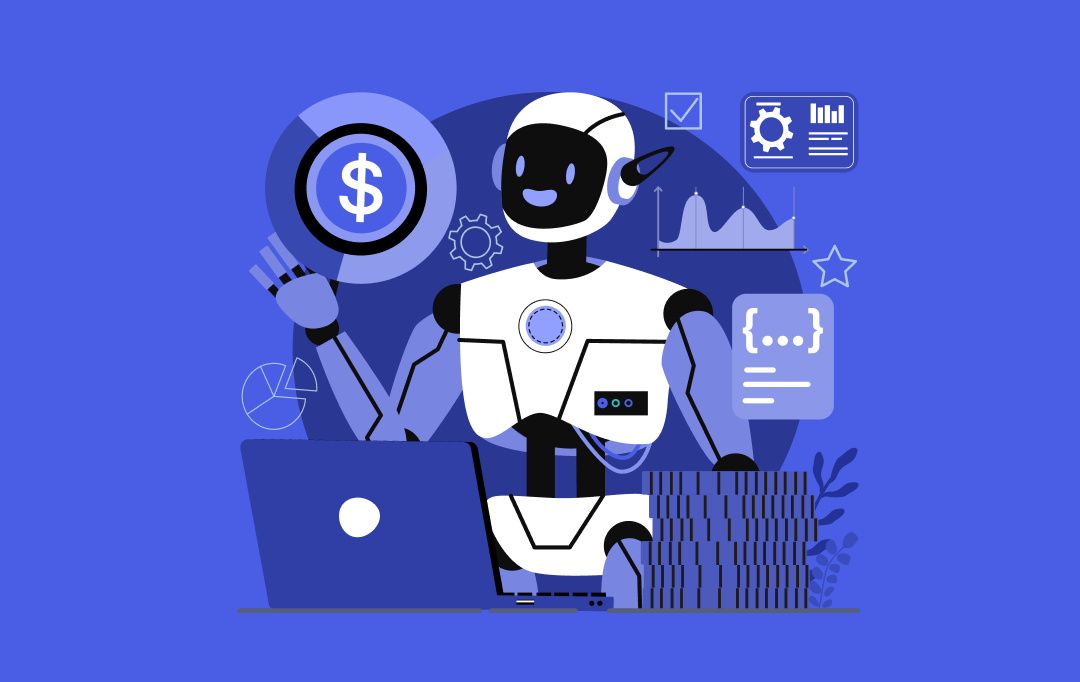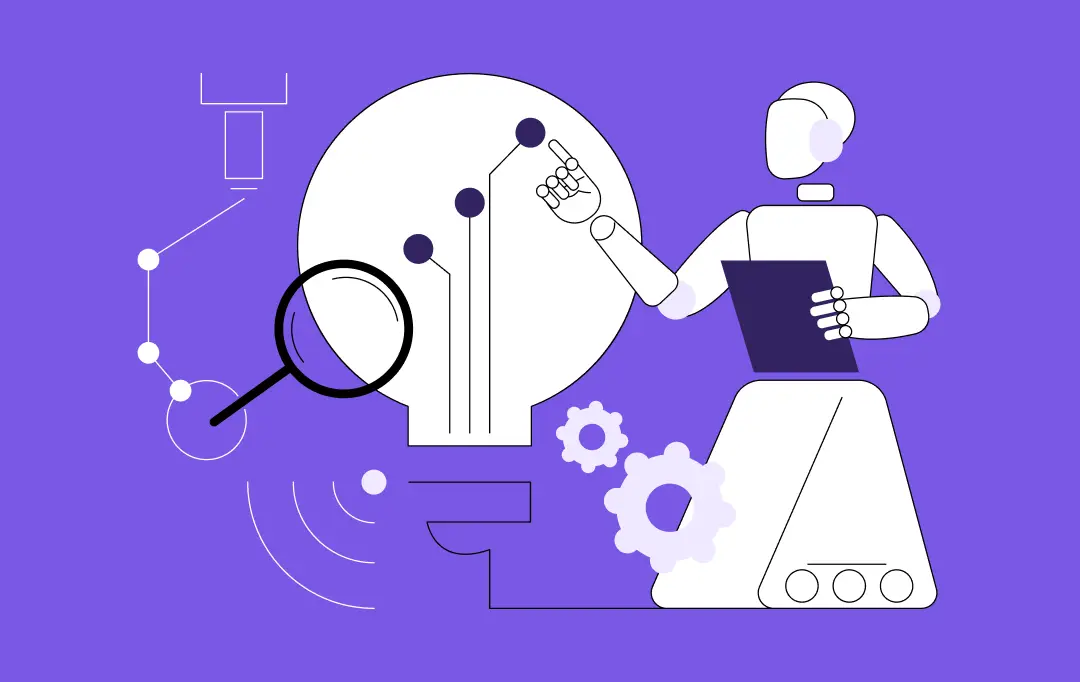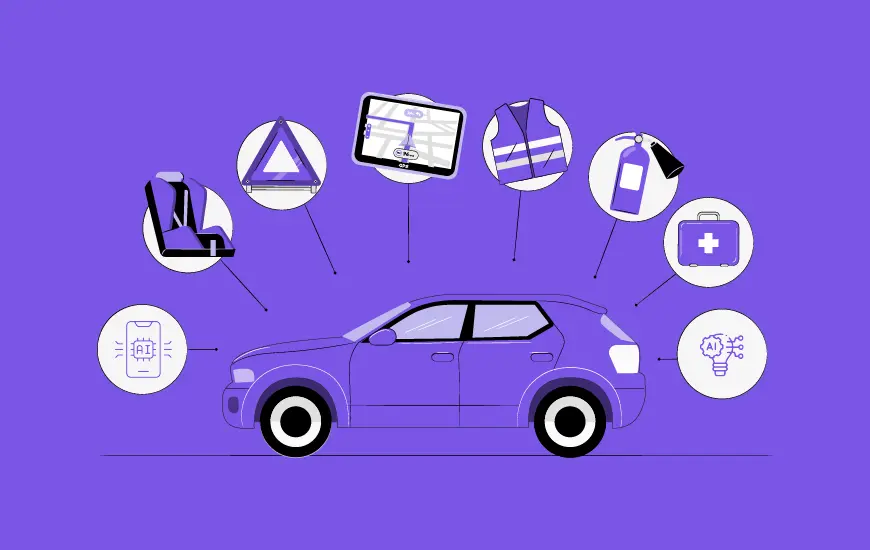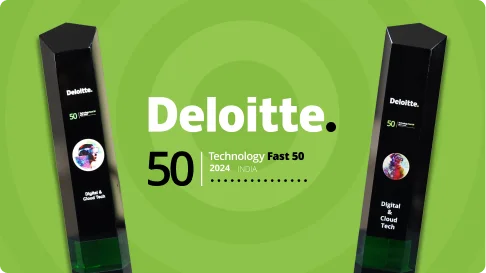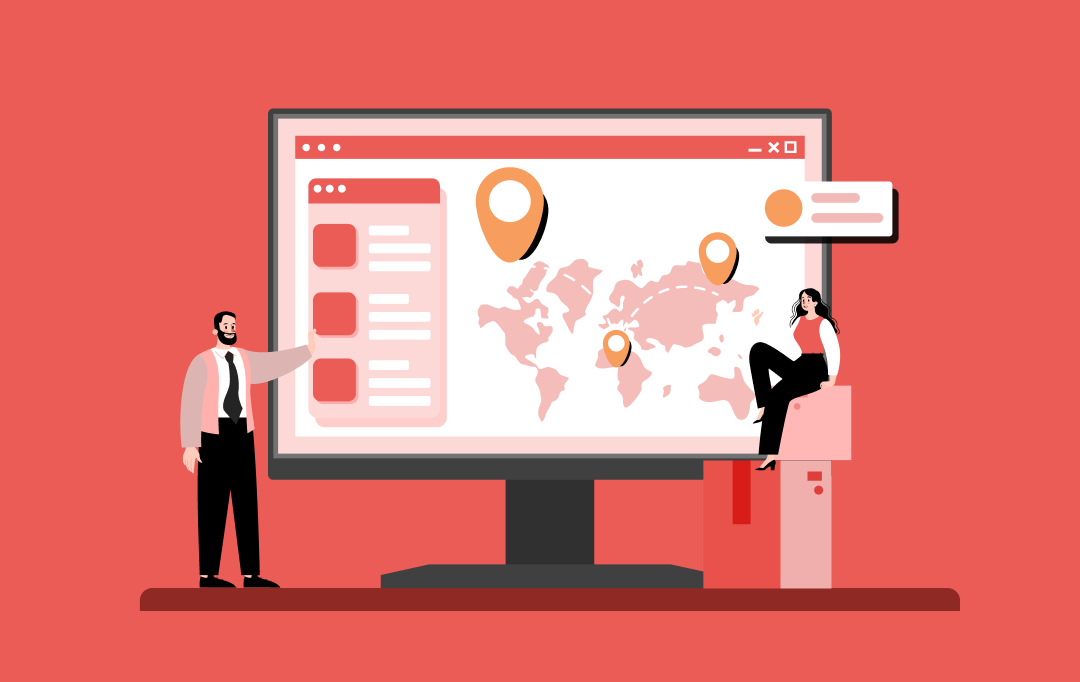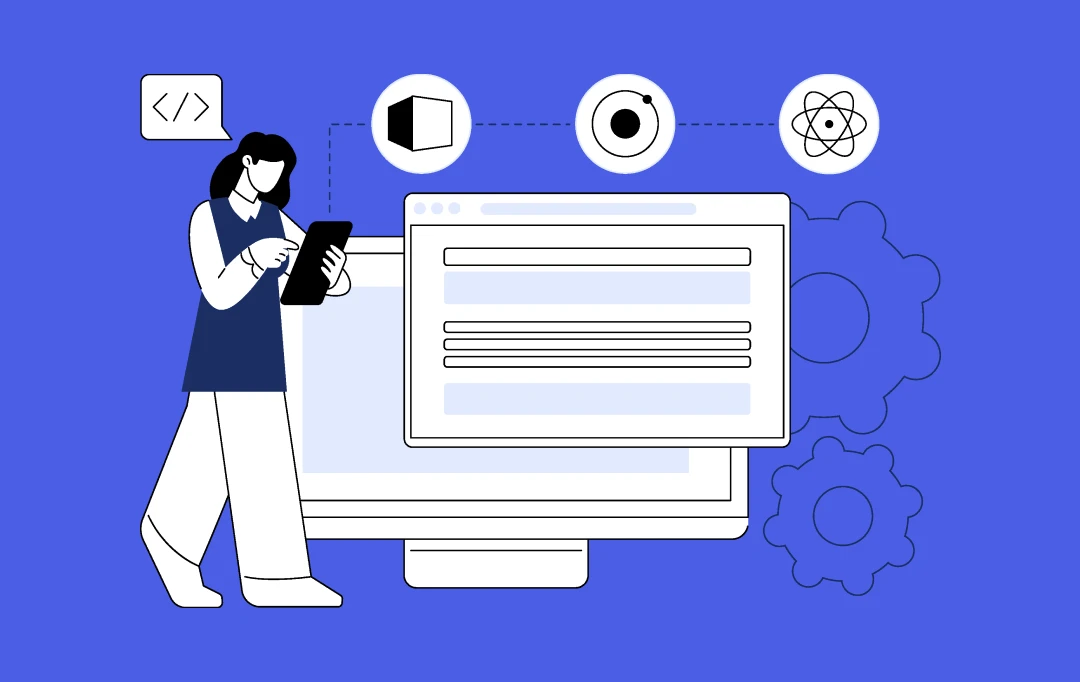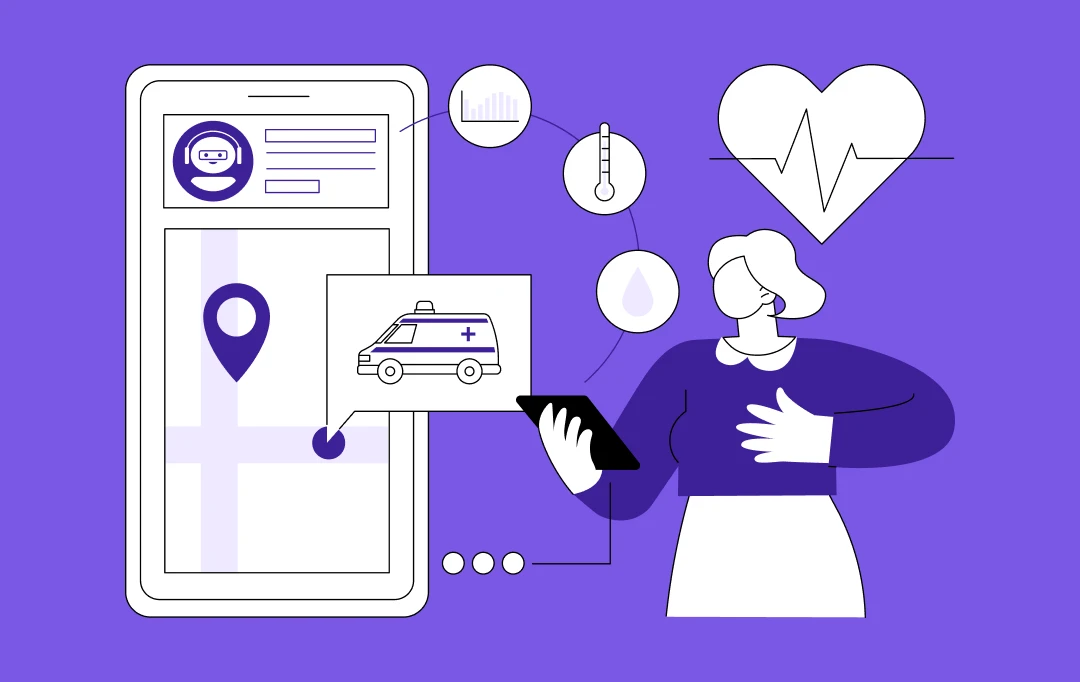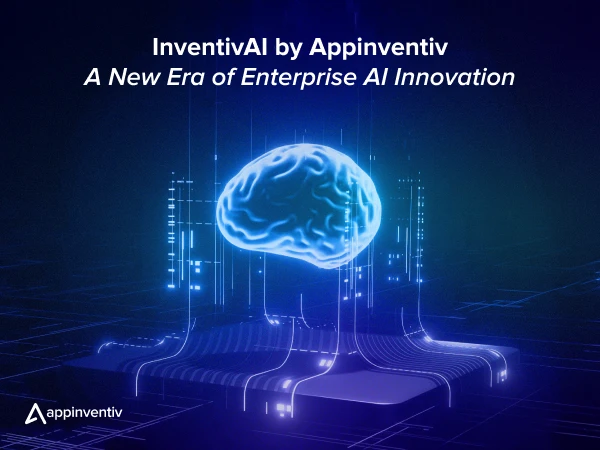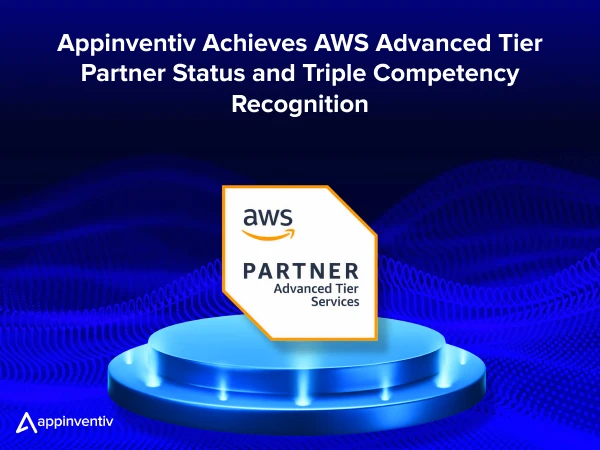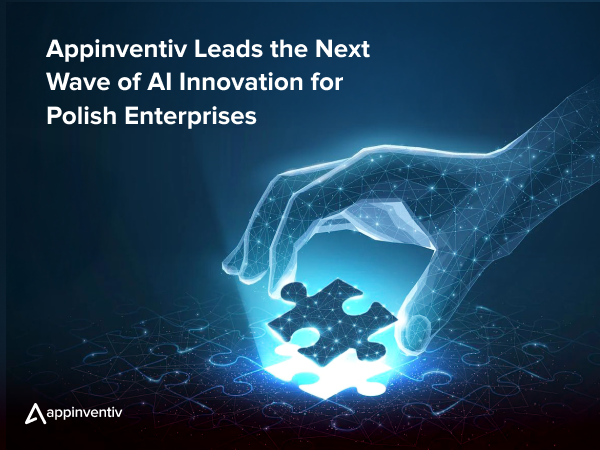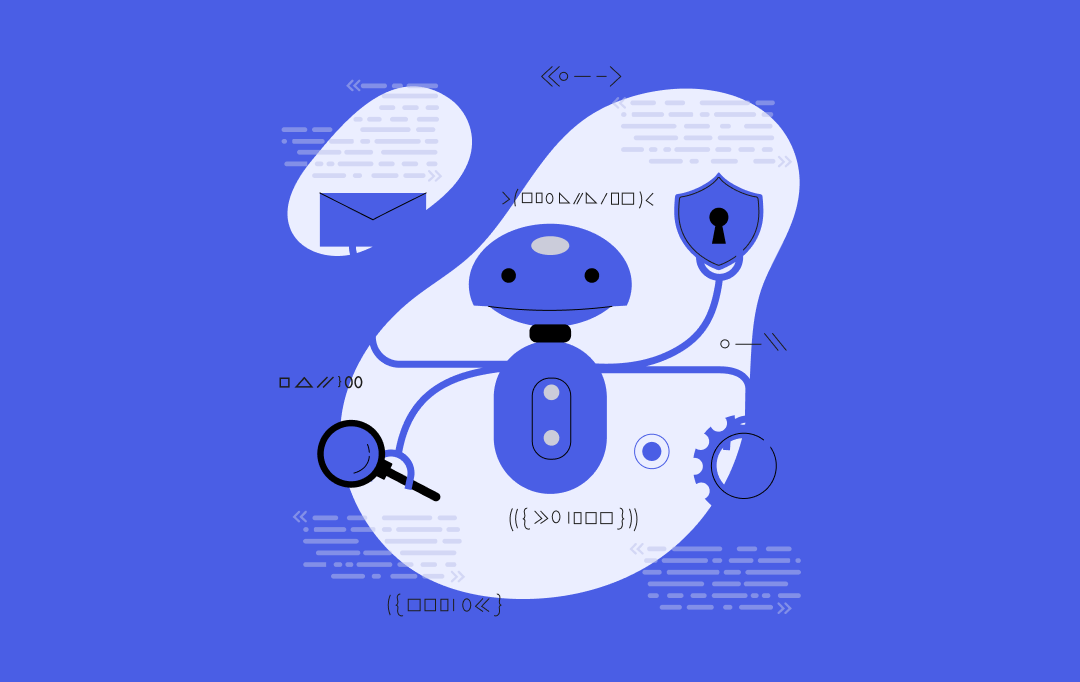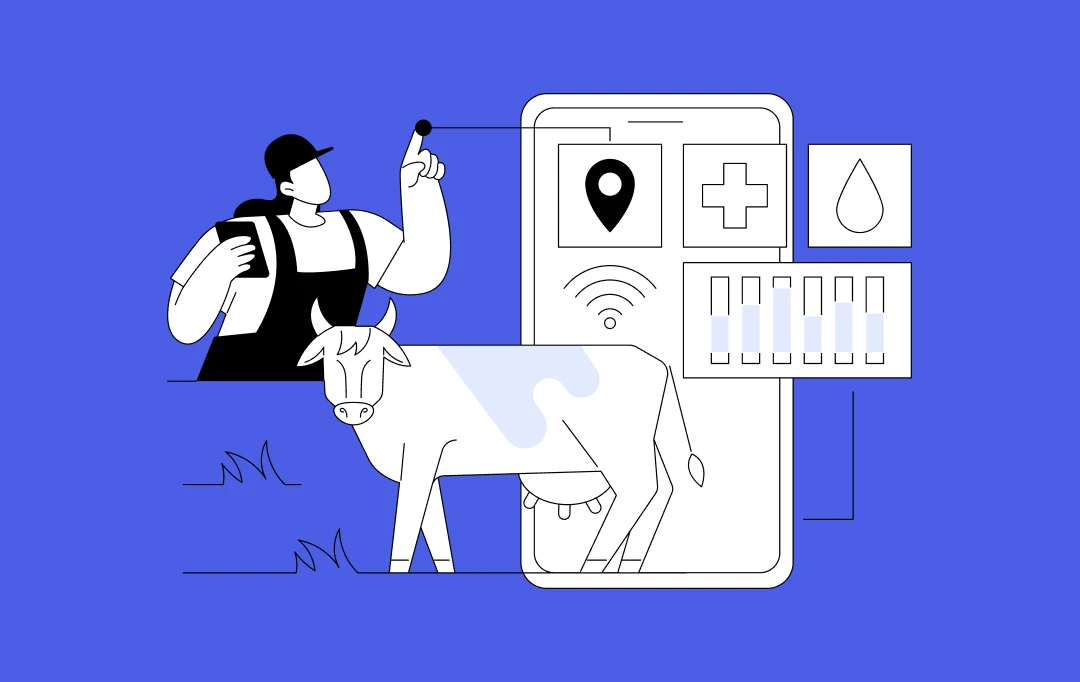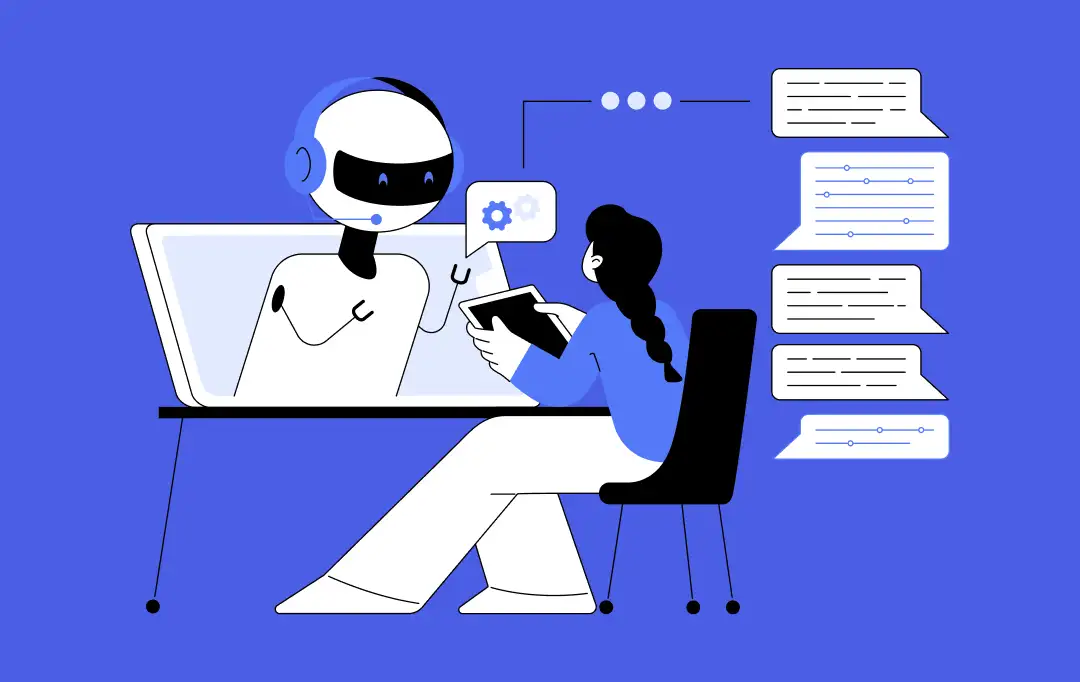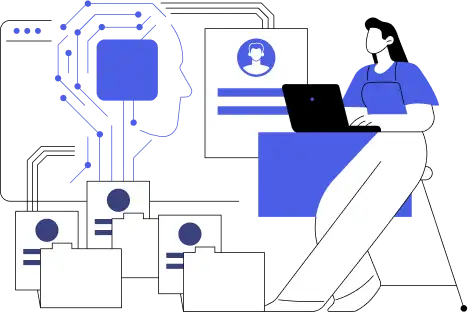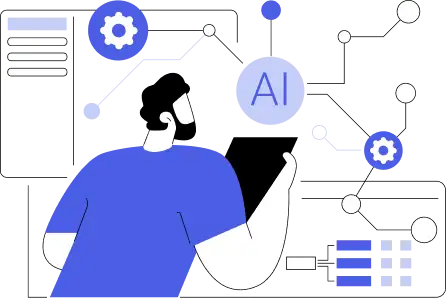- Understanding AI Agent Interoperability
- Why Enterprises Need Interoperable AI Agents
- Core Benefits of AI Agent Interoperability
- 1. Operational Efficiency Through Collaboration
- 2. Cost Reduction via Resource Optimization
- 3. Faster Decision-Making
- 4. Enhanced Customer Experience
- 5. Scalable Automation
- Applications of AI Agent Interoperability: Real-World Use Cases
- 1. Healthcare: Philips’ AI Agents Simplifying Clinical Workflows
- 2. Manufacturing: Siemens’ Agentic AI for Connected Factories
- 3. Retail: Walmart’s Super Agents Unifying Operations
- 4. Finance: JPMorgan’s AI Agents for Smarter Fraud Detection
- Building Interoperability: Key Architectural Enablers
- 1. Standardized APIs and Ontologies
- 2. Secure Communication Channels
- 3. Shared Context Memory
- 4. Governance Frameworks
- 6. Continuous Learning Loops
- Bringing It All Together
- The Role of Open Standards in Multi-Agent Communication
- Measuring ROI: Efficiency and Cost Metrics
- 1. Efficiency Gains
- 2. Cost Metrics
- 3. Accuracy and Decision Quality
- 4. Real-World Benchmark
- Common Challenges in Achieving AI Agent Interoperability
- 1. Legacy Systems That Don’t Speak Modern Languages
- 2. Data That Doesn’t Line Up
- 3. Governance Gaps and Fuzzy Ownership
- 4. The Human Resistance Problem
- 5. Scaling Without Creating Chaos
- The Future of Interoperable AI Systems
- From Isolated Automation to Collaborative Intelligence
- The Rise of Agentic Platforms
- The Role of Open Standards in Multi-Agent Communication
- Building Toward the AI Operating System
- Why This Future Matters
- How Appinventiv Enables Enterprise-Grade AI Agent Interoperability
- FAQs
- AI agent interoperability bridges the communication gap between disconnected systems, turning isolated automation into a network of intelligent collaboration.
- McKinsey found that agentic AI delivers up to 40% faster decisions and 30% lower costs, proof that interoperability isn’t theory, it’s measurable impact.
- Enterprises gain more than efficiency; they gain agility. Interoperable agents share context in real time, helping teams anticipate change instead of reacting to it.
- The foundation of scalable AI lies in shared standards, secure communication, and continuous learning not just in adding more tools.
- With Appinventiv, enterprises can build connected AI ecosystems that learn, adapt, and work together to cut costs and accelerate growth.
AI agents are fast becoming the backbone of modern enterprises. They automate workflows, manage data, and drive decision-making across departments. But when each agent operates in isolation, efficiency takes a hit. Without AI agent interoperability, organizations risk building a collection of smart tools that don’t communicate effectively—duplicating work, consuming resources, and missing shared insights.
AI agent interoperability solves this. By enabling multiple agents to communicate, collaborate, and learn from one another, businesses can unlock measurable gains in productivity and cost efficiency. In this article, we’ll explore what Agentic AI interoperability means, its role in workflow optimization, and how enterprises can implement it to reduce costs and boost performance.
Turn those insights into results with enterprise-ready interoperability.
Understanding AI Agent Interoperability
AI agent interoperability is the ability of different AI systems or agents to share context, exchange information, and work toward a common goal. Instead of performing isolated tasks, interoperable agents coordinate actions across the enterprise—connecting data, processes, and decision flows.
From a technical standpoint, this relies on standardized APIs, shared ontologies, and orchestration frameworks that enable agent-to-agent interoperability. The focus isn’t just integration—it’s intelligent collaboration.
For instance, a procurement agent and a finance agent can automatically align on supplier costs, budgets, and payment timelines without human intervention.
The outcome: faster decision cycles and lower operational friction through seamless AI interoperability standards and protocols.
Learn more about AI integration for enterprises that make these connections seamless.
Why Enterprises Need Interoperable AI Agents
Most organizations today deploy AI in fragments — one model for marketing analytics, another for customer support, and a third for logistics. These standalone implementations limit efficiency because data and insights stay trapped within specific functions.
Siloed AI systems create several challenges:
- Repetitive data analysis and redundant tasks
- Inconsistent decision-making across departments
- Increased maintenance and integration costs
These are among the major challenges in AI implementation.
By contrast, the interoperability of AI agents in enterprise applications allows seamless data sharing and contextual collaboration. This unified intelligence layer improves coordination and ensures that every department benefits from real-time, organization-wide insights.
Enterprises implementing AI interoperability platforms report faster data flow, simplified integration, and significant cost savings, and these are the key outcomes of reducing costs with AI agent interoperability.
Core Benefits of AI Agent Interoperability
Every organization wants its systems to work together, but in reality, most AI tools still act like employees who never talk to each other. Data lives in silos, decisions take longer, and teams end up doing double work. Interoperability changes that story. It allows AI agents to share information, context, and intent, creating a network where everything, and everyone moves in sync.
Here’s what that looks like in action.
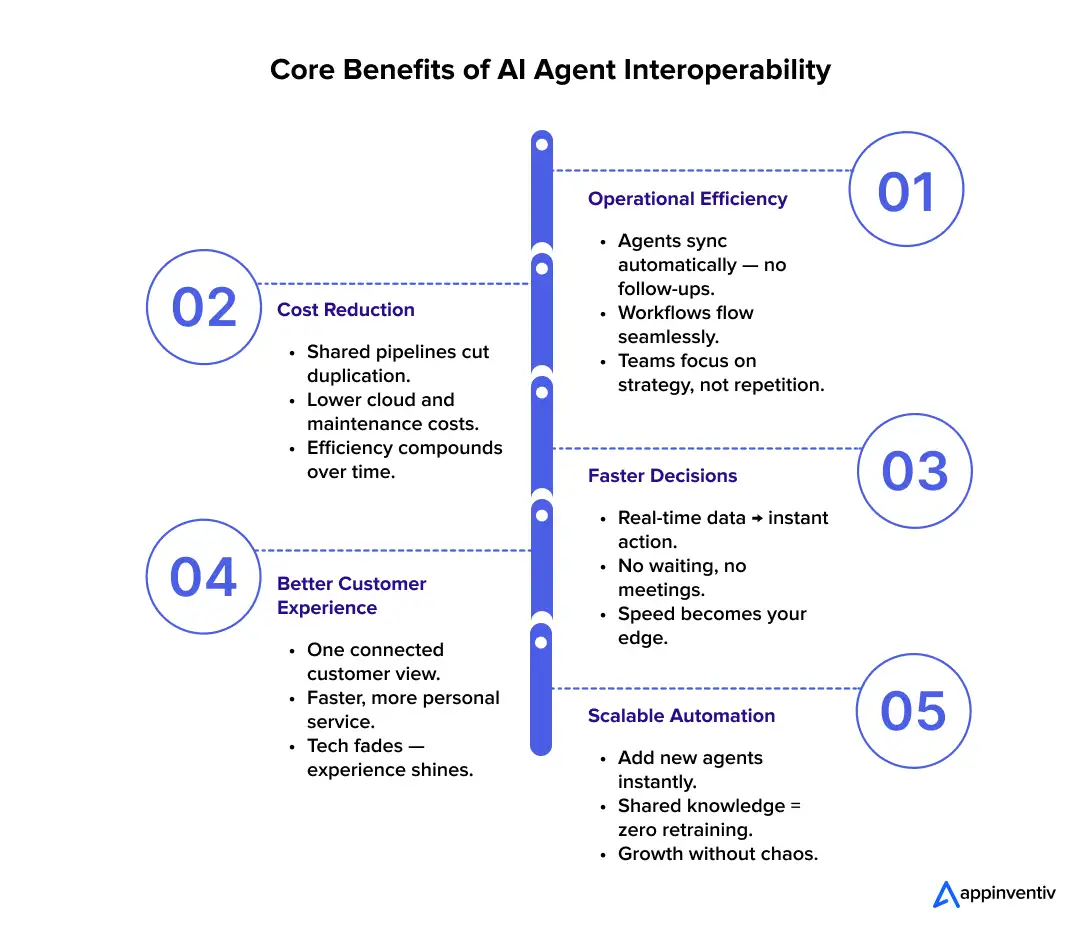
1. Operational Efficiency Through Collaboration
Think about how much time is lost every day just waiting, HR waiting for finance reports, logistics waiting for procurement updates, customer support waiting for backend data. Interoperability removes that waiting game.
When AI agents can talk to each other, information flows naturally between systems. The HR agent automatically syncs with the finance agent to forecast payroll costs based on real-time attendance. The logistics agent alerts procurement when delivery schedules shift. Suddenly, coordination happens quietly in the background — without endless email chains or manual follow-ups.
AI agent interoperability for workflow optimization allows processes to flow without friction, cutting hours from daily routines.
The real magic lies in how this helps people. Instead of juggling repetitive communication, employees can focus on what actually needs human judgment — problem-solving, strategy, and creativity. It’s not about replacing teams; it’s about giving them breathing room to do their best work.
And because these agents learn from each interaction, collaboration keeps improving over time. The more they connect, the smoother things run.
2. Cost Reduction via Resource Optimization
Every organization spends more than it should on systems that don’t share. Each department buys its own tools, trains its own models, and stores the same data in different places. It’s like paying multiple electricity bills for the same house.
Agentic AI interoperability lets agents share pipelines, computing power, and storage—eliminating duplicates. The same infrastructure now supports multiple functions such as analytics, operations, compliance without separate setups.
Cloud costs drop, maintenance becomes simpler, and the IT team finally gets to build instead of constantly fixing integrations.
But the savings aren’t just technical. When teams spend less time reconciling spreadsheets or repeating work across departments, the organization saves real hours. Over time, these savings compound into sustainable efficiency, directly showing the benefits of AI agent interoperability.
Discover cost-optimization strategies for enterprises, when scaling an AI project.
3. Faster Decision-Making
In most enterprises, the right data exists, it just doesn’t arrive fast enough. Interoperable AI agents in automation help businesses move from reacting to anticipating. Learn how AI decision intelligence in enterprises transforms insight into rapid action.
When AI agents share context in real time, decisions no longer wait for manual updates. Imagine this: A sales forecasting agent detects an unexpected spike in demand. Instantly, it signals the production agent to ramp up output, alerts the supply chain agent to source materials, and notifies the finance agent to adjust cash flow. No meetings. No back-and-forth. Just action.
This is how organizations move from reacting to anticipating. Leaders get a complete picture the moment something changes. And because agents interpret data collaboratively, those insights are richer, not just faster.
Speed becomes a competitive edge — powered not by more people, but by smarter connections between systems.
4. Enhanced Customer Experience
Interoperability isn’t just about internal speed — it transforms how customers experience a brand. When AI systems across marketing, sales, and support share context, customers no longer repeat the same details across channels. Their history, preferences, and recent interactions travel with them.
The result is smoother conversations, faster resolutions, and experiences that feel personal without being intrusive. Behind the scenes, agents are quietly coordinating across departments so that every touchpoint from inquiry to delivery feels connected. It’s technology doing what it should: making service feel more human.
See how AI in customer experience is improving satisfaction and retention.
5. Scalable Automation
Scaling automation often feels like trying to add new parts to a running machine. Each new tool or model takes weeks to train, test, and integrate. But when agents already share the same language and knowledge base, expansion becomes effortless.
With interoperability, new AI agents don’t start from zero. With industry-standard agent interoperability, a new compliance or analytics agent can plug into existing frameworks and start contributing instantly, no retraining or pipeline rebuild required.
For example, a financial firm might begin with two interoperable agents — one for fraud detection and another for transaction tracking. Later, when they add a compliance agent, it instantly understands context from both. No duplication of effort, no retraining from scratch.
This modular growth lets businesses evolve naturally. They can start small, prove value, and scale on their own terms. Over time, the ecosystem behaves like a living system — where every new addition strengthens the whole network.
And that’s the real promise of interoperability: not just smarter automation, but sustainable growth without chaos.
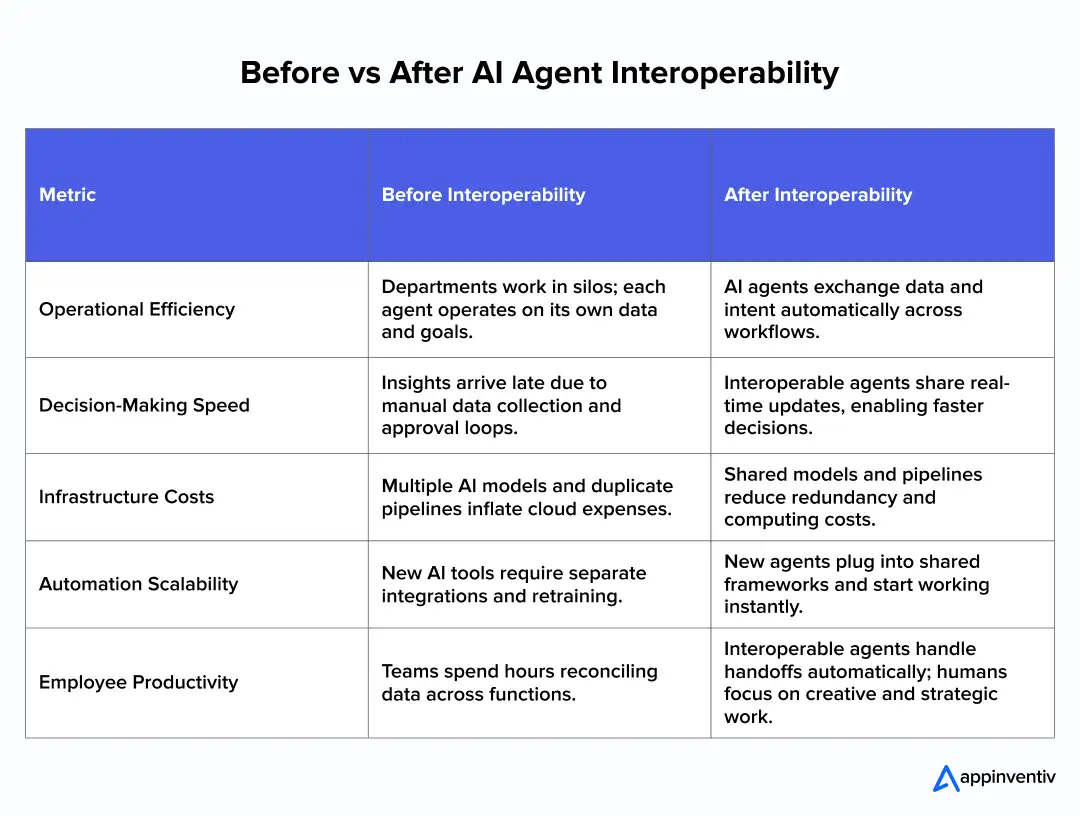
Applications of AI Agent Interoperability: Real-World Use Cases
When enterprises move beyond single-purpose automation and start connecting AI agents, results compound fast.
Instead of separate systems running in isolation — one predicting demand, another managing service tickets, another handling finance — interoperable AI agents work as a team. They share context, align on goals, and respond to change in real time.
Here are the key top AI trends to watch out for.
1. Healthcare: Philips’ AI Agents Simplifying Clinical Workflows
In healthcare, the biggest productivity loss often happens outside the operating room — in paperwork, scheduling, and billing. Philips has been tackling this problem through interoperable AI systems that connect patient monitoring, imaging, and administrative data under one ecosystem.
Using FHIR-based interoperability standards and machine learning agents, Philips HealthSuite enables AI modules for documentation, clinical decision support, and billing to “speak” to one another instead of operating in silos.
When a patient’s scan is uploaded, the documentation agent automatically updates clinical notes, while the billing agent codes the procedure in real time.
According to Philips, this connected architecture has reduced administrative documentation time by up to 40%, freeing clinicians to focus on patient care rather than data entry.
Human impact: Nurses and physicians spend more time with patients, less time reconciling systems. The AI becomes not a replacement but an invisible assistant that smooths care delivery behind the scenes.
2. Manufacturing: Siemens’ Agentic AI for Connected Factories
In manufacturing, every minute of machine downtime hits the bottom line. Siemens’ agentic AI interoperability connects maintenance, supply chain, and production, enabling predictive operations.
Here, digital twin agents collect live machine data via IoT sensors. A maintenance agent predicts potential failures, alerts a procurement agent to order parts, and coordinates with logistics to minimize disruption. All this happens autonomously through MQTT-based data exchange and shared orchestration APIs.
By integrating AI in manufacturing, Siemens reports up to 50% productivity gains in pilot deployments of interoperable agent networks across Industry 4.0 environments.
Human impact: Production managers no longer chase dashboards or emails. They get proactive insights — not after the failure, but before it. Interoperability lets every part of the manufacturing floor “talk,” creating factories that think and adapt like living systems.
3. Retail: Walmart’s Super Agents Unifying Operations
In retail, data fragmentation has always been the invisible enemy — separate systems for customer experience, supply chain, store operations, and online sales. Walmart has taken a bold step to fix that through what it calls “AI super agents.”
Instead of deploying dozens of small, isolated bots, Walmart is now building fewer, interoperable mega-agents that unify functions across departments. These agents connect to APIs spanning inventory management, workforce planning, and customer interaction — forming a connected operational core that scales globally.
For instance, when the demand-forecasting agent detects rising sales for a product, it triggers the inventory agent to restock, the logistics agent to optimize delivery, and the pricing agent to adjust dynamic offers — all without manual input.
Walmart reports that this interconnected agent ecosystem is cutting inefficiencies, speeding up internal workflows, and allowing employees to focus on higher-value retail experiences.
Human impact: Store associates can now serve customers faster, supply-chain teams respond in real time, and business leaders gain a single view of operations. The technology fades into the background — what customers experience instead is simply smoother service.
4. Finance: JPMorgan’s AI Agents for Smarter Fraud Detection
Financial systems generate massive data streams every second, from card transactions to identity verifications. JPMorgan Chase uses a network of interoperable AI agents to handle this complexity — each specializing in tasks like anomaly detection, KYC validation, and compliance checks.
Using shared data ontologies and unified governance frameworks, these agents exchange risk scores and contextual insights securely. If the fraud-detection agent flags an unusual transaction, the KYC agent instantly re-verifies the user’s identity while the compliance agent logs the event for regulators — all in milliseconds.
JPMorgan’s AI systems have reduced false positives in fraud detection by over 20%, according to recent case analyses.
Human impact: Customers face fewer false fraud alerts, compliance teams handle fewer manual reviews, and financial operations run faster with greater transparency. Integrating AI in Fintech ensures the entire fraud-management chain acts as one, not as scattered systems chasing the same event.
Building Interoperability: Key Architectural Enablers
You can’t bolt interoperability onto an AI system later, it has to be built in from the start.
That means creating an environment where AI agents can talk, trust, and learn from one another safely. Behind every seamless interaction you see between intelligent systems lies a careful mix of architecture, discipline, and design.
True AI agent interoperability standards combine technical precision and operational trust through these five pillars:

Bottom Tagline: From communication to cognition — interoperability transforms AI agents into a connected, self-improving ecosystem
1. Standardized APIs and Ontologies
Imagine putting two smart people in a room but giving them different dictionaries. They’ll both be intelligent, but they’ll never truly understand each other. That’s what happens when AI agents don’t share a common language.
Standardized APIs solve that first part — they make communication predictable. Whether you’re using REST, GraphQL, or gRPC, every message follows a clear structure. But communication isn’t just syntax; it’s meaning. That’s where ontologies come in — the shared definitions that help agents interpret information the same way humans do.
For example, in healthcare, the FHIR data model ensures that “patient record” means the same thing across hospitals. In finance, ISO 20022 provides that same consistency for transactions. When your APIs and ontologies are aligned, agents can share insights instead of just data.
In short: APIs help them talk, ontologies help them understand.
2. Secure Communication Channels
When AI agents start talking to each other, the first question should always be, is this conversation safe? Every message, every data handoff, every decision signal needs to be protected by design.
That’s why enterprise AI systems use TLS encryption for data in transit, OAuth 2.0 for identity verification, and zero-trust network access so that even inside the network, nothing is assumed to be safe by default.
In industries like healthcare or banking, that’s not optional — it’s mandatory. Regulations such as HIPAA, GDPR, or PDPL make secure interoperability a non-negotiable part of system design.
At Appinventiv, we often tell clients: real innovation doesn’t come from connecting systems — it comes from connecting them securely. When data moves freely and safely, trust follows.
3. Shared Context Memory
For AI agents to make smart decisions, they need context — not just from the moment, but from everything that’s happened before. That’s where shared memory comes in.
Think of it as a collective brain that holds knowledge all agents can draw from. If the customer-support agent solves a recurring issue, that resolution is stored so the product-design or quality-control agent can learn from it automatically.
Technically, this memory might live inside vector databases like Pinecone or knowledge graphs such as Neo4j, which connect data points in a way that reflects how humans think.
Without this shared memory, each agent would keep reinventing the wheel. With it, the ecosystem becomes more cohesive — every new insight strengthens the whole system.
4. Governance Frameworks
Interoperability without governance is like a city without traffic lights — eventually, something crashes. As AI agents grow in number and autonomy, enterprises need clear rules around who can access what, when, and why.
A strong governance layer defines these boundaries. It manages data access rights, version control, and decision accountability. It also keeps the system compliant with ethical and legal standards.
Many organizations now use policy engines like Open Policy Agent or enterprise AI governance tools from Microsoft or Google to enforce these rules.
Governance isn’t about control for the sake of control. It’s about creating a safe structure where innovation can flourish without risking trust.
5. Responsible Interoperability and Trust
As enterprises start connecting multiple AI agents, governance can’t just be about access control — it’s about responsibility. Every agent should leave a clear footprint of how it reached a decision: what data it used, which model version was involved, and what checks were applied.
This kind of traceability builds trust from the inside out. It helps teams see AI not as a black box but as a transparent, auditable system. When bias monitoring, explainability, and accountability are part of the foundation — not just add-ons — enterprises can scale AI confidently without losing control. Responsible AI interoperability ensures collaboration happens safely, even when hundreds of intelligent systems are working together.
6. Continuous Learning Loops
Finally, interoperability shouldn’t be static. The best systems learn from their interactions and keep improving. Continuous learning loops let AI agents share outcomes, review what worked, and adjust their coordination over time.
This could be as simple as agents scoring each other’s performance or as advanced as an orchestrator agent that fine-tunes collaboration models across the network.
For example, if a logistics agent finds that delays keep happening with a certain route, it can feed that insight to a planning agent, which then adjusts delivery schedules or vendor selection next time.
Over time, the system starts feeling alive — not in a science-fiction sense, but in how naturally it evolves and adapts to the organization’s rhythm.
Bringing It All Together
Interoperability isn’t one tool or one upgrade, it’s an ecosystem built on trust, shared understanding, and continuous learning.
Together, these form the blueprint for scalable implementation of AI agent interoperability in enterprise ecosystems.
When you get these foundations right, AI agents stop acting like individual tools and start behaving like a coordinated, intelligent workforce.
Learn how Appinventiv builds secure, interoperable AI ecosystems for enterprise clients.
The Role of Open Standards in Multi-Agent Communication
For AI agents to truly work together, they need more than just connections; they need a shared language and a set of rules they all understand. That is where open standards come in. They are creating the foundation for how agents communicate, collaborate, and build trust with one another.
Emerging frameworks such as the Open Agentic Schema Framework (OASF) and Model Context Protocol (MCP) are pioneering new AI agent interoperability protocols. They give AI agents a structured way to describe what they can do, find other agents with similar goals, and exchange data safely, almost like setting up a common grammar for intelligent systems.
Unlike traditional APIs, these AI interoperability standards and protocols bring context—helping agents understand not just the task but the intent behind it. This evolution moves enterprises from an API-first mindset to an AI-agent-first architecture where systems collaborate naturally.
As these standards mature, discoverability, scalability, and trust will become core features, ushering in what many call the “Internet of Agents,” where intelligence flows freely across systems.
Measuring ROI: Efficiency and Cost Metrics
For most enterprises adopting AI interoperability platforms becomes real only when it translates into measurable business outcomes. The beauty of AI agent interoperability is that its impact can be tracked clearly – through the same KPIs that business leaders already understand: efficiency, cost, and accuracy.
Unlike early-stage automation projects that relied on anecdotal wins, Industries powering AI agent interoperability witnessed quantifiable improvements across the organization. Here’s how enterprises typically measure success.
1. Efficiency Gains
When AI agents start communicating seamlessly, the first improvement is usually in process speed and coordination.
Tasks that once required manual approval or data exchange now flow autonomously from one system to another. Teams spend less time waiting for updates and more time acting on insights.
For instance, in logistics or supply chain environments, interoperable routing and inventory agents can process incoming orders, update stock levels, and assign deliveries simultaneously – cutting down operational lag.
According to McKinsey’s – Seizing the Agentic AI Advantage, companies adopting agent-based interoperability frameworks reported up to 40% improvement in task efficiency by eliminating handoffs between disconnected systems.
2. Cost Metrics
Cost reduction is where interoperability often surprises decision-makers. When agents share computing resources, APIs, and data pipelines, they cut duplication at the infrastructure level. Instead of maintaining multiple cloud environments for each business unit, enterprises operate one unified stack that all agents plug into.
This consolidation brings down cloud usage, data storage, and maintenance overheads. It also reduces indirect costs – fewer integration projects, fewer manual reconciliations, and fewer support tickets caused by data mismatches.
In practice, even modest interoperability between agents can deliver 20–30% savings in infrastructure costs, especially in industries like manufacturing and logistics, where data-heavy workflows are the norm.
3. Accuracy and Decision Quality
Interoperability doesn’t just make systems faster or cheaper – it makes them smarter. When AI agents share real-time context, they create a more complete view of the business. Decisions are made using connected intelligence rather than isolated data points, leading to measurable improvements in accuracy.
For example, in retail demand forecasting, when customer-demand agents, pricing agents, and supply-chain agents share insights continuously, the forecasting error margin drops significantly. That means fewer lost sales, fewer overstock issues, and better capital allocation.
This improvement in precision often translates directly to better ROI on analytics and automation investments – because every accurate decision compounds into tangible financial outcomes.
4. Real-World Benchmark
Consider a logistics enterprise that deployed interoperable AI agents for route optimization and inventory synchronization. Before interoperability, dispatch teams worked from spreadsheets, and decisions were delayed by manual approvals.
In large-scale deployments of interoperable AI agents, organisations have reported up to ~30% productivity improvements and similar cost reductions. For example, McKinsey cites a case of a 30% improvement in credit-turnaround times when agents replaced manual hand-offs.
The same principle applies across industries: when systems collaborate, efficiency isn’t incremental – it’s exponential.
Common Challenges in Achieving AI Agent Interoperability
Every enterprise wants its systems to “just talk to each other.” But anyone who’s tried knows it’s rarely that simple.
Behind every smooth, connected AI ecosystem sits years of technical debt, messy data, and uneven accountability — the kind that doesn’t show up in architecture diagrams but shows up everywhere else.
Here are the 5 biggest AI agent interoperability challenges, and how to move past them:
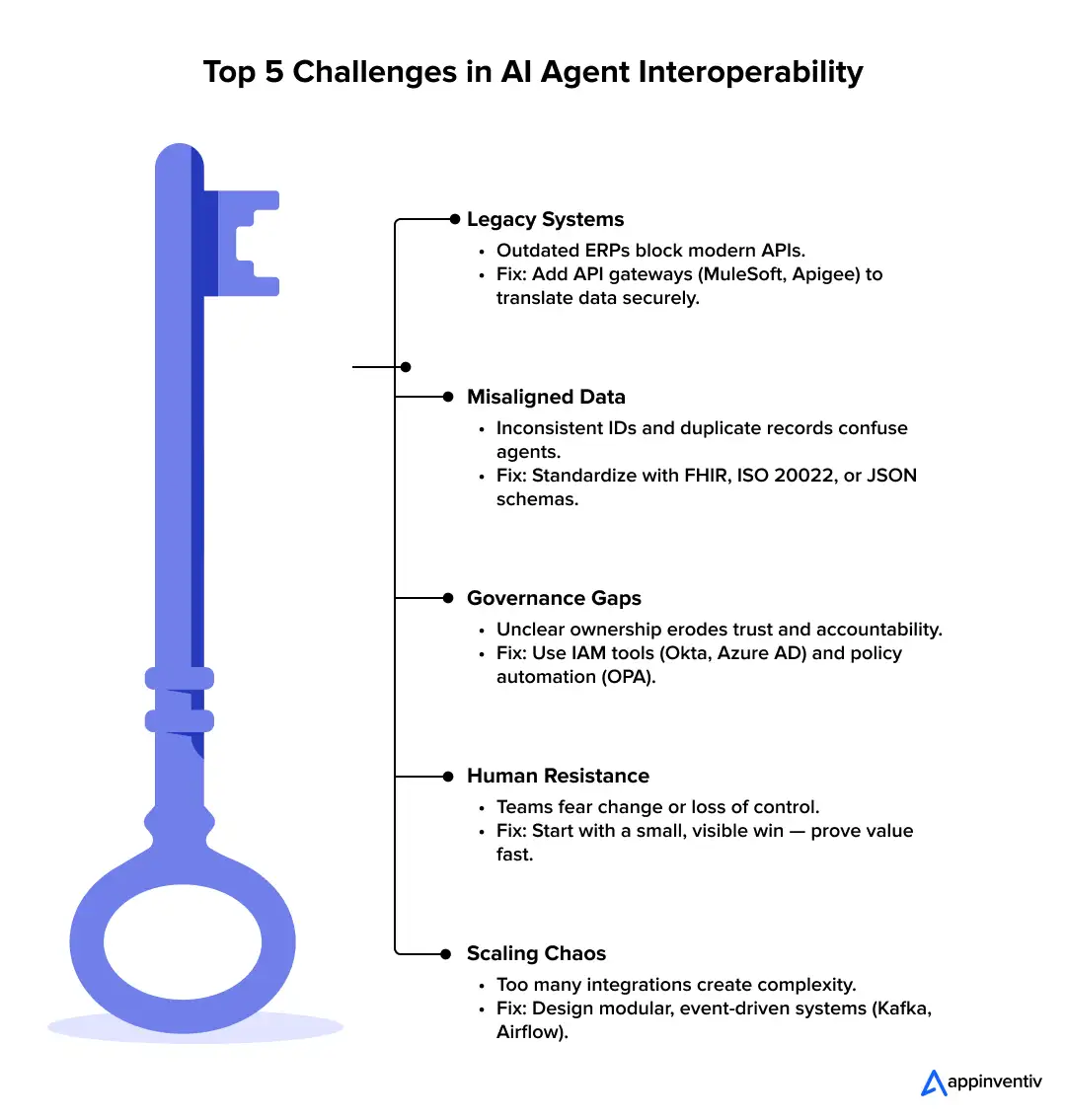
1. Legacy Systems That Don’t Speak Modern Languages
Walk into any large organization and you’ll find a few systems that haven’t been touched in years – but still run something mission-critical. Maybe it’s an old ERP module or a billing system built when dial-up was still a thing.
Those systems weren’t built for today’s world of APIs and event-driven data. They were built to do one job well and stay isolated.
So when modern AI agents try to connect, they hit a wall. No REST endpoints, outdated SOAP calls, rigid schemas, and a general “don’t-touch-it-or-it’ll-break” aura.
How to fix it: You don’t need to rebuild everything from scratch. Start small.
Wrap those older systems with an API gateway – tools like MuleSoft, Apigee, or even a lightweight Node.js wrapper can expose key data points securely without touching the core.
Think of it as adding a translator – the system keeps speaking its old language, but now everyone else can understand it.
Modernization doesn’t have to be loud. Sometimes, it’s just about giving your oldest systems a new voice.
2. Data That Doesn’t Line Up
If legacy systems are the bones of a company, data is its bloodstream — and right now, it’s often flowing in five different directions.
You’ll find mismatched fields, inconsistent IDs, duplicate customer profiles, and product lists that look different in every department. When AI agents rely on this, their insights become fragmented.
An agent in marketing might think it’s analyzing “Product X,” while the finance agent believes it’s “SKU-101.” Same thing, different names — and now both are wrong.
How to fix it: Create a common language for data before trying to automate it.
Use data standardization frameworks that fit your industry — FHIR for healthcare, ISO 20022 for finance, or just clean, JSON-based schemas that everyone sticks to.
Add a data validation pipeline — tools like Talend or Databricks make it easier to check and reformat data before it hits your AI systems.
And remember, data standardization isn’t a one-time project. It’s a hygiene habit. You keep doing it because the cost of ignoring it only grows over time.
3. Governance Gaps and Fuzzy Ownership
The moment multiple AI agents start exchanging data and making decisions, ownership questions surface fast.
Who approves the data they use? Who audits the outcomes? If an agent makes a bad call, whose responsibility is it?
Without answers, chaos creeps in. Some teams restrict access out of fear. Others overexpose data just to keep things moving. In both cases, trust erodes.
How to fix it: Build governance into the workflow, not around it.
Give every agent a verified identity through IAM systems like Okta or Azure AD. Assign permissions at the data level — who can read, who can write, who can trigger actions.
Use policy automation (like Open Policy Agent) to enforce these rules consistently across all environments.
Then go one step further: track your models. Use MLOps tools like MLflow or Kubeflow to version models, monitor performance drift, and maintain a clear audit trail.
It’s not about bureaucracy — it’s about visibility. The more transparent the system, the easier it is to trust what it’s doing.
4. The Human Resistance Problem
Not every problem comes from code. Some of the hardest come from people.
When interoperability starts rolling out, departments get protective. IT worries about security, operations worry about control, and leadership wants proof before scaling up.
That hesitation isn’t wrong — it’s human. Change always feels risky when it threatens what already works.
How to fix it: Don’t start with a company-wide integration plan. Start with a small win — two AI agents that can demonstrate value quickly.
Maybe connect customer support and logistics so orders update automatically, or finance and HR so payroll forecasting runs itself.
Once teams see the results — fewer bottlenecks, cleaner data, faster turnarounds — they start asking for interoperability, not resisting it.
Real trust grows from results, not presentations.
5. Scaling Without Creating Chaos
When the first few integrations work, everyone wants in. That’s when the next trap appears — integration overload.
Each new connection adds complexity. Before long, your architecture diagram looks like spaghetti.
How to fix it: Design for scalability early.
Use orchestration frameworks like Airflow, Prefect, or Temporal to control multi-agent workflows from one place.
Switch to an event-driven architecture with Kafka or RabbitMQ so agents can work asynchronously instead of waiting on each other.
And, most importantly, keep your integrations modular — new agents should plug in like apps, not require rewiring your entire system.
Scalability is less about technology and more about restraint. Just because two systems can be connected doesn’t mean they should — at least not yet.
The Future of Interoperable AI Systems
We are entering an era where AI systems no longer act alone. The future of AI agent interoperability lies in agentic ecosystems—AI agents that autonomously collaborate, negotiate, and learn.
In this future, interoperability isn’t just a convenience — it’s the foundation of intelligence itself.
From Isolated Automation to Collaborative Intelligence
Today, most enterprises are still juggling a collection of smart but disconnected tools.
A chatbot handles customer queries. A forecasting model predicts demand. A compliance engine checks documents. Each one works well on its own but rarely knows what the others are doing.
In the coming years, these individual solutions will begin to connect through shared context layers and agent orchestration frameworks.
Instead of multiple systems solving small pieces of a problem, organizations will have networks of AI agents that coordinate seamlessly — much like teams of human specialists who understand one another’s intent.
This is where the real transformation happens: when AI stops acting like a set of tools and starts functioning like an organization within an organization.
The Rise of Agentic Platforms
Platforms such as LangChain, AutoGen, and OpenAI’s Swarm are early examples of this evolution, shaping how the role of Agentic AI in interoperability will redefine digital operations.
- LangChain Agents make it possible for different AI models to chain their outputs, passing context like teammates in a relay.
- AutoGen focuses on creating multi-agent workflows where agents debate, negotiate, and agree on the best path forward – similar to how departments collaborate on decisions.
- Swarm goes one step further by enabling modular communication among specialized agents that can scale dynamically based on task complexity.
It’s early days, but these systems are teaching enterprises what connected intelligence really looks like: adaptable, contextual, and surprisingly human in the way it coordinates effort.
The Role of Open Standards in Multi-Agent Communication
For interoperability to truly scale, agents need a shared playbook. Open communication standards are now emerging to make that possible — defining how one AI system talks to another, how data is exchanged, and how tasks are handed off securely.
These frameworks are setting the stage for what’s next: enterprise ecosystems where AI tools from different providers can work together without friction. When companies aren’t locked into one vendor or language, they gain flexibility to experiment, adapt, and build networks of intelligent agents that evolve with business needs.
Building Toward the AI Operating System
As these ecosystems evolve, enterprises will move closer to what analysts describe as the AI Operating System, a unified environment where agents coordinate like digital coworkers, driving continuous innovation.
Imagine an environment where:
- A finance agent forecasts quarterly performance.
- A procurement agent adjusts supplier orders automatically.
- A marketing agent syncs with the CRM to optimize campaigns.
- And all of them feed into a strategy agent that advises leadership in real time.
That’s not theoretical anymore — it’s the direction enterprise AI is already heading.
According to McKinsey & Company, agentic AI will form the backbone of next-generation enterprise systems, enabling “networks of intelligent agents that work together across domains to create value at scale.”
Why This Future Matters
What’s emerging isn’t science fiction. It’s the natural next step in digital transformation — the shift from automation that executes to AI that collaborates.
And while the technology is exciting, its real impact lies in what it does for people: freeing teams from repetitive coordination so they can focus on creativity, strategy, and human insight.
Enterprises that start preparing for this now — by designing interoperable architecture, establishing governance, and investing in multi-agent frameworks — will find themselves not just keeping pace with AI evolution but shaping it.
How Appinventiv Enables Enterprise-Grade AI Agent Interoperability
At Appinventiv, we help enterprises move beyond isolated AI use cases to create interoperable agent ecosystems that think, talk, and act together. Our foundation is built on three core strengths — API-first architecture that keeps systems connected, enterprise-grade security that ensures data integrity across every interaction, and domain-specific orchestration frameworks that make AI agents adapt naturally to each industry’s workflow.
Our experience spans across healthcare, logistics, finance, and retail, where connected AI agents now handle everything from data reconciliation to real-time recommendations. A prime example is MyExec, an AI-powered business consultant that uses multiple agents to analyze data, interpret documents, and offer strategic advice, proving how agentic systems can unlock decision intelligence at scale.
With 100+ autonomous AI agents deployed, 200+ data scientists and engineers onboard, 150+ custom AI models trained, and 35+ industries mastered, Appinventiv’s custom AI agent development services has grown into one of the few global teams capable of building interoperable AI systems at enterprise scale. We’re not just helping businesses adopt AI — we’re helping them build connected intelligence that learns, collaborates, and evolves with every interaction.
Small steps toward interoperability can lead to major efficiency gains. Learn how Appinventiv helps enterprises connect intelligent systems
FAQs
Q. How does AI agent interoperability solve enterprise problems?
A. AI agent interoperability allows different AI systems to communicate, share context, and work together toward common goals. Instead of teams relying on isolated tools, interoperable agents coordinate data and decisions across departments. This helps enterprises eliminate redundancy, speed up operations, and reduce manual intervention — making everyday business workflows more intelligent and connected.
Q. How does agent-to-agent interoperability boost efficiency in enterprise operations?
A. Agent-to-agent interoperability improves efficiency by removing the communication gap between systems. For instance, when HR, finance, and procurement agents exchange data automatically, tasks that once required manual coordination now happen instantly. The result is smoother workflows, faster decisions, and fewer errors — helping teams focus on strategy rather than repetitive processes.
Q. How can AI agent interoperability reduce operational costs?
A. AI agent interoperability reduces costs by eliminating duplicated resources and manual work. Interoperable agents share computing power, data pipelines, and infrastructure instead of each department maintaining separate systems. This streamlines operations, lowers cloud expenses, and minimizes integration overhead — leading to measurable savings across the enterprise.
Q. How does Appinventiv implement AI agent interoperability in enterprises?
A. At Appinventiv, we design interoperable AI ecosystems that connect siloed systems and automate collaboration across business functions. Our API-first approach, secure data architecture, and custom orchestration frameworks ensure that AI agents can exchange context safely and efficiently. From healthcare and logistics to finance and retail, we help enterprises deploy agentic AI systems that enhance productivity and decision-making.
Q. How can interoperable AI agents optimize workflow and reduce business costs?
A. Interoperable AI agents enable workflows to run seamlessly from one department to another — without human handoffs. A logistics agent can update supply chain data while finance adjusts budgets and operations align schedules in real time. This unified intelligence minimizes delays, optimizes resource use, and reduces overall business costs while keeping teams in sync.


- In just 2 mins you will get a response
- Your idea is 100% protected by our Non Disclosure Agreement.
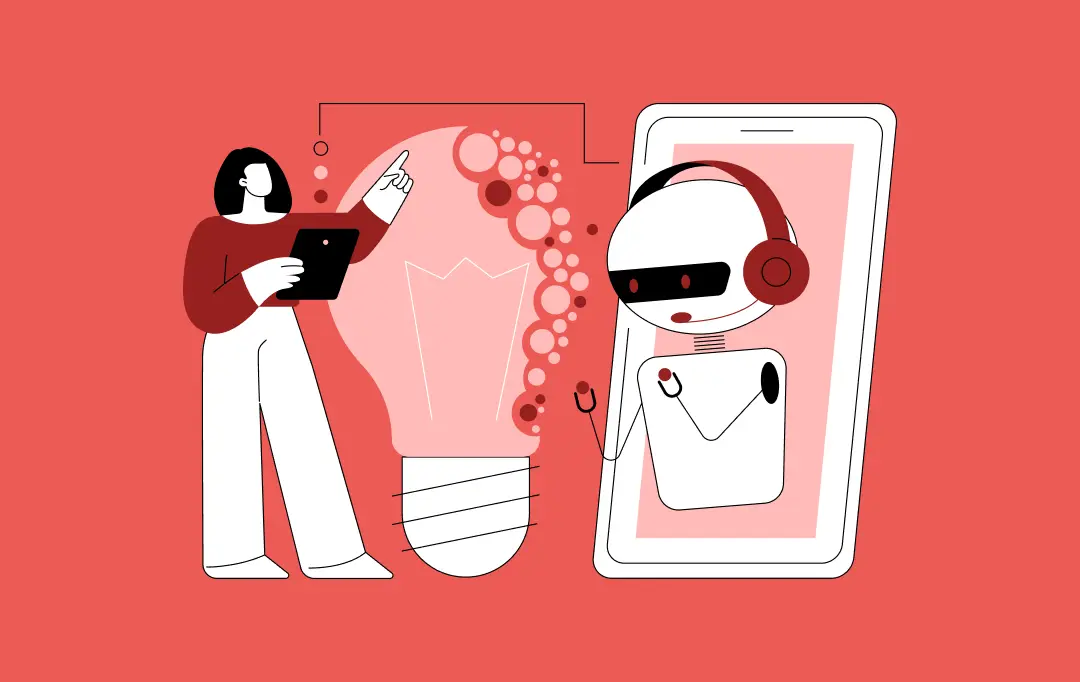
How Much Does It Cost to Build an AI App in Dubai?
Key takeaways: AI app costs in Dubai typically range from AED 80,000 for simple builds to AED 800,000+ for enterprise systems. Dubai is past AI experimentation, and not investing now means catching up later at higher cost. The real budget is driven by data, integrations, architecture, and compliance, not just app features. Hidden costs like…

How AI Tokenization is Enabling Secure and Transparent Asset Ownership in 2026
By 2026, AI tokenization has moved beyond early-stage experiments and pilot projects. Tokenizing real-world assets has become a serious commercial strategy for financial institutions, supply chain operators and technology-driven enterprises. A 2025 report by the World Economic Forum in collaboration with Accenture highlights tokenization as a key mechanism for value exchange in modern financial markets.…

13 Ways Generative AI is Transforming the Hospitality Industry
Key takeaways: The most mature applications of Generative AI for hospitality are in guest service, revenue management, marketing, and operations automation. Real value comes from integrating generative AI into hospitality operations and existing PMS, CRS, CRM, and POS systems, rather than using stand-alone tools. Successful programs treat Generative AI in hospitality as a product, incorporating…
